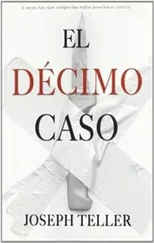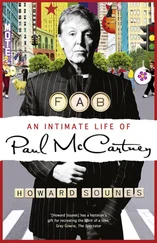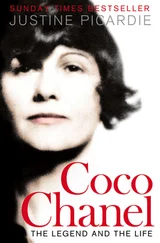Churchill liked Gabrielle, and one of his closest friends, the Duke of Westminster, was her ex-lover, with whom she had remained on close terms. Westminster may have stepped in and asked the prime minister to help her. Churchill’s possible intervention may have been encouraged by the knowledge that Gabrielle might have had things to say about the rumored pro-Nazi sympathies of the Duke and Duchess of Windsor, with whom she was acquainted. This would not have gone down well.
While many of Gabrielle’s compatriots were amazed at how she “got away with it,” a young English journalist, Malcolm Muggeridge, marveled. He wrote:
By one of those majestically simple strokes which made Napoleon so successful a general, she put an announcement in the window of her emporium that scent was free for the GIs, who thereupon queued up to get the bottles of Chanel No.5 , and would have been outraged if the French police had touched a hair of her head. Having thus gained a breathing space, she proceeded to look for help to right and to left… thereby managing to avoid making even a token appearance amongst the gilded company — Maurice Chevalier, Jean Cocteau, Sacha Guitry and other worthies — on a collaborationist charge. 56
Gabrielle’s lawyer, René de Chambrun, as the son-in-law of the Vichy prime minister Pierre Laval, was himself living very discreetly. He advised Gabrielle that she ought to do the same thing, and outside France. Gabrielle knew and liked neutral Switzerland, and that was where she chose to go into voluntary exile.
Before she left, however, she received a postcard from a young GI who had called on her at the Ritz early in 1945. 57Hans Schilinger told her he had been sent by her friend, the now-celebrated photographer Horst, who had fled France for the United States early in the war. Horst had managed to get his compatriot Hans Schilinger to the States, where the young man then joined the U.S. Army. Horst had told his friend that if he was in Paris, he must “give my love to Coco,” and this Schilinger had done. The story is usually told that Gabrielle, in turn, asked Schilinger, if ever he came across someone called Hans Günther von Dincklage, to please write to the Ritz and let her know.
Schilinger had indeed come across von Dincklage, and is supposed to have written Gabrielle a postcard telling her that he had secured his release from a POW camp in Hamburg. In reality, the sequence of events was appreciably different. Gabrielle had given Hans Schilinger the considerable sum of ten thousand dollars, and asked him to “go to Austria, find von Dincklage, give him the money and if possible conduct him to his home in Schleswig-Holstein.” This we know because Schilinger and von Dincklage were arrested by the British military authorities in the spring of 1945. The military recorded that Schilinger “was apparently accompanying Baron von Dincklage with a view to taking him to the latter’s family estate at Gettorf. Von Dincklage was in possession of US dollars 8,948 which were impounded on his arrest.” 58There was no possibility of getting von Dincklage back into France, and with the burden of Gabrielle’s own blackened reputation acting as a spur, by the winter of 1945 she had made her judicious move to Lausanne.
While Gabrielle’s life had been one of almost perpetual motion for decades, her Swiss exile launched her on an empty nomadic period. For several years before the war, she had spent her days in the rue Cambon and her nights across the road in the Ritz. Forever on the move, she also regularly left Paris for a few days, staying in the house of a friend, at resort hotels, or at La Pausa in the south of France. However, in leaving Paris for Switzerland, Gabrielle had lost something more important to her than any dwelling place — she had lost her business, her all-important work . At the rue Cambon it had always been possible to distract oneself from too much thought. Either a collection was in progress or it was the aftermath of the one just gone. There were the new season’s textiles, braids, buttons, shoes, hats, jewelery and other accessories to be discussed with the appropriate craftsmen and women; the hours with the models on which all ideas must be tried out; the friends, sycophants, and employees proffering queries and comments. Endless activity.
Gabrielle’s lack of occupation during the war had been frustrating enough, but in Switzerland, she didn’t even have the consolation of rue Cambon nearby. Aside from a handful of friendships, for more than twenty-five years, her work had represented the one permanent fixture in her life. Her lovers, her friends, her family, where she lived — these were forever changing. Gabrielle was almost a caricature of the Heraclitean notion that the essence of life is flux, and to resist this change is to resist the heart of our existence.
Whatever she might have sometimes said to the contrary, she had chosen change as her life, and would say, “I am scared only of becoming bored.” Constant movement was the one thing that would keep this fear at bay. She also knew that moving on, carrying no baggage from the past, was the climate out of which she was best able to create. Gabrielle came closest to being a revolutionary when understanding that, within her there was a “deep taste for destruction and evolution.” This was what she meant when she said, “Fashion should express the place, the moment… fashion has a meaning in time but none in space.” 1
Without her business — both the building and the exercise of designing — as the fixed point in her life, Gabrielle’s incessant movement had lost its meaning and acquired an aimlessness that did not suit her. Leaving Lausanne, she wandered from one grand Swiss hotel to another and back again. With her energies previously harnessed creatively, she now had no outlet for her restlessness and “revealed a certain weariness,” a disenchantment with life, as her old friend Paul Morand put it.
Morand, who had worked for the Vichy government, had recently taken refuge in Switzerland with a number of other political exiles like himself, so as to avoid any legal judgments being meted out by his homeland. He had lost almost everything. As an impoverished and vilified ex-member of the French literary establishment, in the winter of 1946 he took up Gabrielle’s invitation to visit her in Saint Moritz. There, at Badrutt’s Palace Hotel, they sat together over the course of several evenings, and Gabrielle told Morand her story. With nothing to do, with her youth now behind her, inevitably, she looked back.
(These were the evenings referred to at the beginning of this book, and the record of which, years later, Morand would publish as Gabrielle’s “memoir,” The Allure of Chanel. In his introduction, Morand would recall that “with nothing to do for the first time in her life,” Gabrielle was “champing at the bit.”) Reflecting on her heart, which “unburdened the secret of a taciturn disposition,” Morand remembered Gabrielle’s voice “that gushed forth from her mouth like lava, those words that crackled like dried vines, her rejoinders, simultaneously crisp and snappy… a tone that was increasingly dismissive, increasingly contradictory, laying irrevocable blame, I heard them all.” 2He heard her doubts about when to return to the rue Cambon, and how she felt both “trapped by the past and gripped by time regained.” She was part of an age which was suddenly “foreign to her… black bile flowed from eyes that still sparkled, beneath arched eyebrows increasingly accentuated by eyeliner.” 3And although Morand’s Gabrielle was formidably alert and well informed, her star was no longer in the ascendant.
Sitting in the palatial opulence of the Swiss hotel, she talked. Far too intelligent not to be self-aware, she said of herself, “I lack balance… I talk too much,” but she added, “I forget quickly, and furthermore… I like to forget. [Emptying her mind enabled her to create.] I throw myself at people in order to force them to think like me.” 4The contradictions came thick and fast, and while she did always forget, this woman of paradox also declared, “I have never forgotten anything.” Saying that “aging is Adam’s charm and Eve’s tragedy,” Gabrielle now had more time than she wished to contemplate the possibility of her own decline. On the one hand, she despised women who faced aging without dignity, and on the other, she was unable to comprehend the thought of her own nonexistence. She would say that the idea “of youth is something very new, who talked about it twenty years ago?”; she also said that 1939 was the first time it had occurred to her that she was no longer young: “It hadn’t occurred to me that I could grow old. I’d always been among bright, pleasant people; friends. And all at once I found myself alone, separated from everyone I liked. Everyone I liked was on the other side of the ocean [she means those who had fled to the States].” 5But there were distractions. A few old friends, such as Visconti, visited her in Switzerland; there was a handful of new Swiss friends, and a new female companion, Maggie van Zuylen.
Читать дальше












